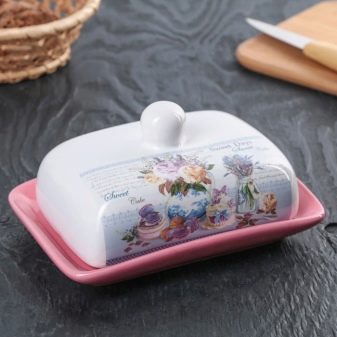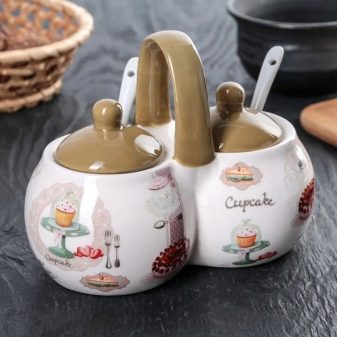All about dolomite cookware

Nowadays, dolomite dishes are increasingly appearing on store shelves. It is inexpensive and attracts attention with its beauty. However, many are unsure whether to purchase such items. Doubts concern both the safety of the material and the durability of the cookware. Let's figure out these issues.


What is this material?
Dolomite is a natural material. It is composed of magnesium and calcium carbonate. The structure of the rock is similar to that of limestone (the same porous). The natural color of the material can be white, light yellow, gray or even reddish. It all depends on the other components contained in the composition. Dolomite cookware has become popular due to the softness of the material, which is easy to shape.
And also glaze easily lays on such a surface, giving the products a decorative effect.

Properties
Dolomite dishes are surprisingly light in weight. This makes it very different from ordinary ceramics and porcelain. However, the use of such items for eating is not recommended. First of all, dolomite is a very fragile material. With daily use, the risk of damage to objects increases, because dishes can break from any awkward movement.
And also with frequent temperature changes (for example, when hot or very cold food gets into the dishes), the glaze may begin to crack. They do not tolerate such products and liquids. This is due to the high porosity of the material. Therefore, drinking tea from a dolomite mug will also not work. Exceptions are articles made of dolomite ceramics, in which the percentage of the material under consideration is small.


Many people fear that dolomite cookware is harmful. This is not entirely true. The material itself cannot harm human health, as it is natural and environmentally friendly. But the paint that is used in the manufacture of products can be dangerous due to the content of lead in it. And also the material itself in the manufacture of tableware can be supplemented with other components to increase its strength or reduce the production cost. Therefore, it is impossible to speak with full confidence about the safety of such items.
It is especially not recommended to use cracked dolomite cookware. In this case, both damaged glaze with dyes and dolomite itself can begin to release harmful substances when reacting with acidic products. Nevertheless, intact products made from this material can be used in any kitchen. They can be used as decoration. And also in them you can store bulk products, fruits, sweets.


Views
Most of the pure dolomite products are decorative. These are stands for household sponges (in the form of mini-trays and others), containers for salt and pepper, dishes for fruits, vases for sweets and cookies. Also, oil cans, sugar bowls, bowls, cans for bulk products are produced.
Teapots, milk jugs and jugs are usually made from ceramics with a low dolomite content. The same goes for mugs and plates. Such products can be used for their intended purpose, but their durability depends on many factors.
It is impossible not to remember the pots made of dolomite ceramics, although they do not belong to the category of utensils. Such products are popular, as there are rumors about the benefits of the material for plants. Of course, they are unfounded. Any plants need regular watering. Dolomite is afraid of water, so a pot made of natural material will quickly fail.
If the percentage of dolomite in the composition of the product is small, then the material will not affect the soil and green spaces in any way. Nevertheless, dolomite pots are very beautiful, so many growers go to the trick. They are placed in a large decorative pot of a different, smaller size, made of more durable material.


How to make?
Dolomite tableware production is carried out in workshops with professional equipment. It will not work to make a product from this material at home. Moreover, it has already been said about the need to add other components to dolomite to increase its custom properties. There are other nuances that only professionals are familiar with, for example, a shorter firing time. This is due to the high magnesium content in the material.
It is not difficult to check the quality of the cookware made when buying. Experts advise to gently knock on the product. If you hear a clear ringing, it means that the firing process was carried out efficiently. If the sound is dull, it means that the product is burned unevenly or other manufacturing conditions are not met.


Features of operation
Here are some tips from experts in the operation of such cookware.
- First of all, it is important to be careful when handling dolomite objects. Don't forget about their fragility.
- Products can only be washed by hand using a soft sponge and non-abrasive cleaning agents.
- Do not pour boiling water into dolomite mugs. Otherwise, microcracks may appear in the material.
- If you notice chips, cracks or other damage, the dishes should be thrown away. You cannot use it.
Thus, before purchasing dolomite cookware, it is worth considering how you will use it. If you just need a beautiful piece of decor, you can safely buy the product.
If you want a reliable mug, a set of durable plates, or a high-quality teapot, the other options are best.


In the next video, you will find an overview of a dolomite mug.








